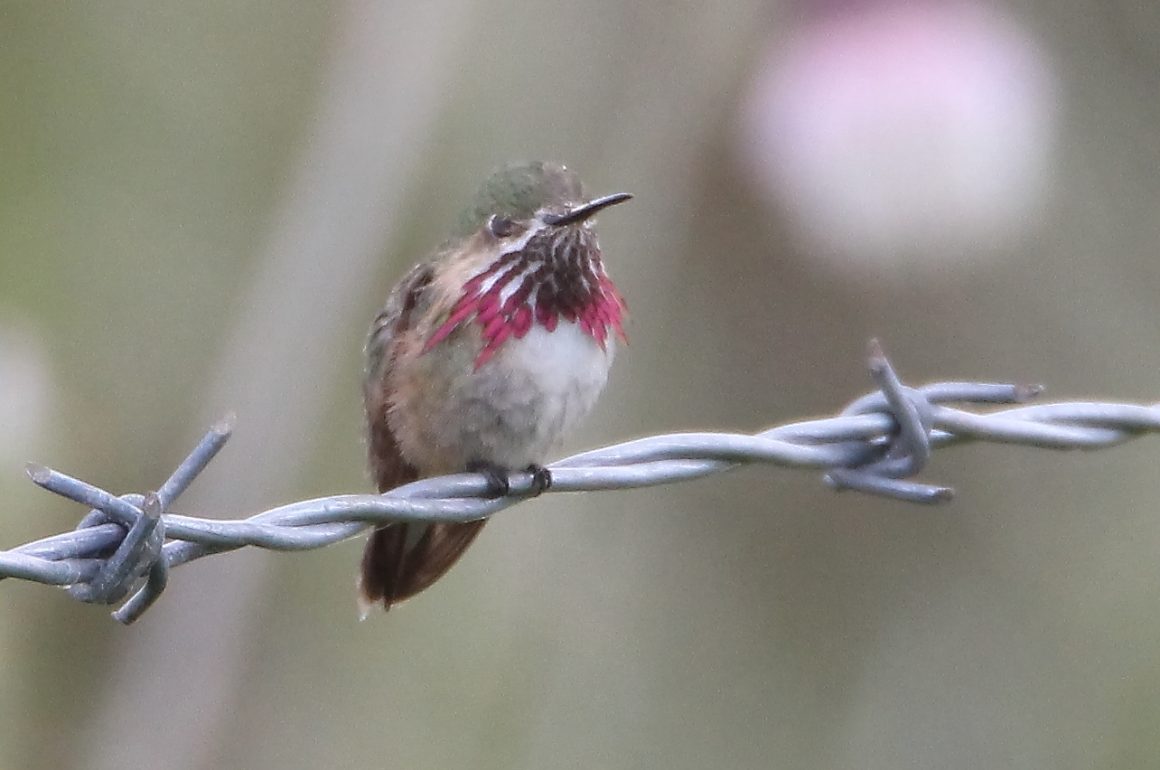
So my birding buddy who is a botany professor lives on his family’s seven hectares (17 acres), a mere ten minutes’ drive from my house. It’s a wonderful piece of property, with a waterway running east-west down the middle. The south-facing slope was once used to grow corn and graze cattle, but now sports three ecological homes, and is beginning a process of reforestation. The north-facing slope has many large pine and cypress trees, with a nice understory including oaks, shrubs and, right now, even some lovely ground orchids. But the most unusual section is the waterway. You would swear it was a meadow, until a pair of Mexican Ducks or a Green Heron come flying out of it. The most unusual species here owes its presence directly to this marshy meadow, as that is the favorite habitat for the Grass Wren, a species that was recently split from the Sedge Wren. (And is closely related to the much more common Marsh Wren.) I have never seen this bird anywhere else. But here, every few minutes one hears its rather unmusical song, and sees it perched on a reed or thistle somewhere.
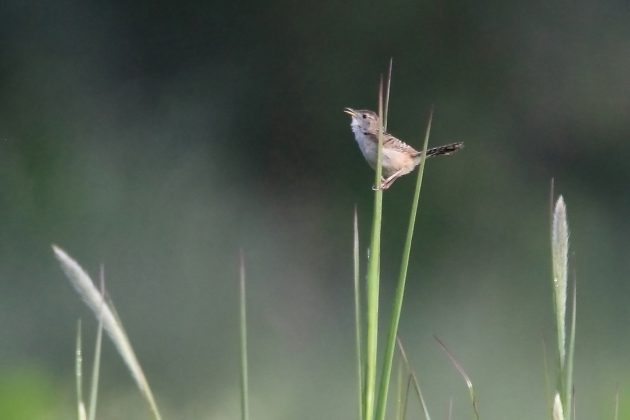
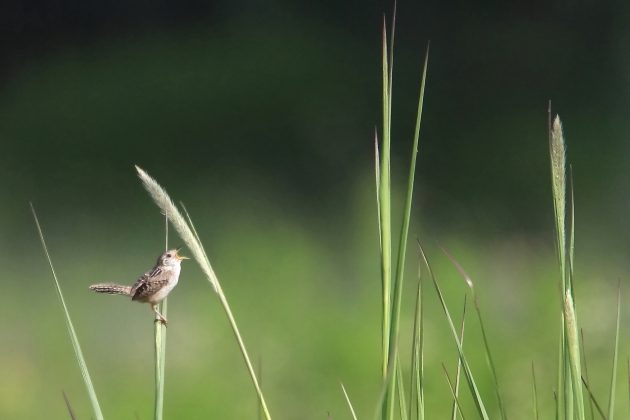
Every year I must visit my friend’s property, to add these Grass Wrens to my year list. But this time, I went with two other buddies, because my friend who lives there had told us about the sudden arrival of several migratory hummingbird species. And oh boy, had they ever arrived. Which species did we see? Resident Broad-billed, Berylline, and White-eared Hummingbirds, and migratory Rufous, Broad-tailed, Black-chinned, Ruby-throated and Calliope Hummingbirds. There may even have been a resident Rivoli’s Hummingbird or Blue-throated Mountain-Gem, but we weren’t sure of that sighting. Eight hummers or nine hummer species, it’s all good.
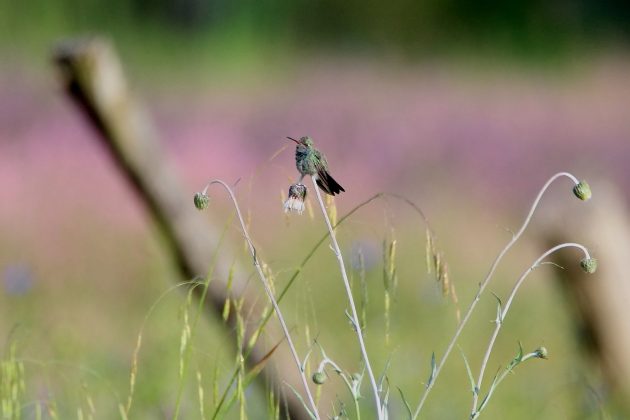
Broad-billed Hummingbird, male
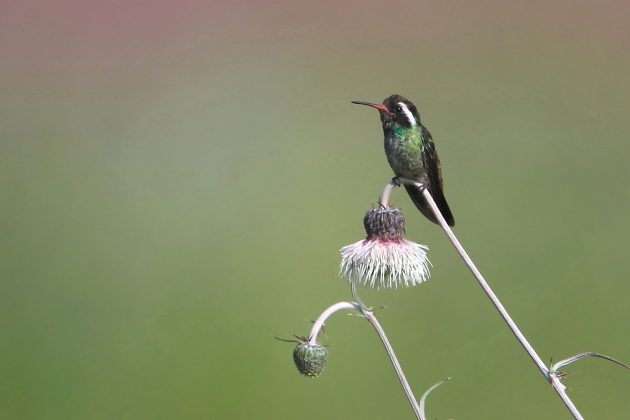
White-eared Hummingbird, male
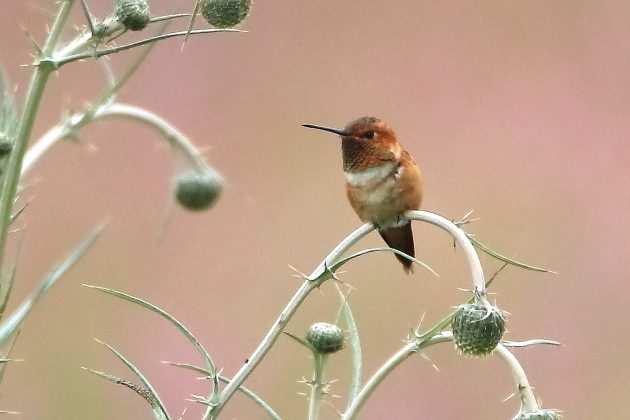
Rufous Hummingbird, male
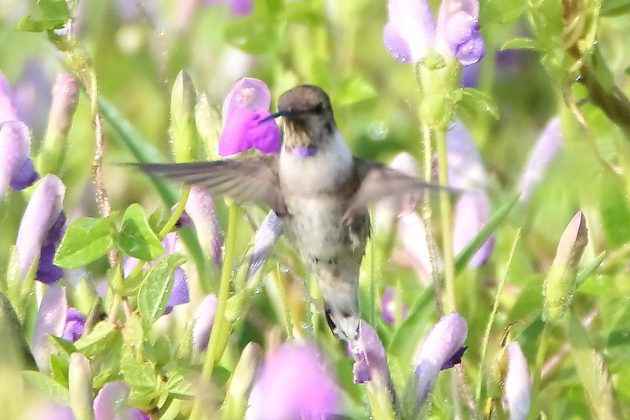
Black-chinned Hummingbird, male
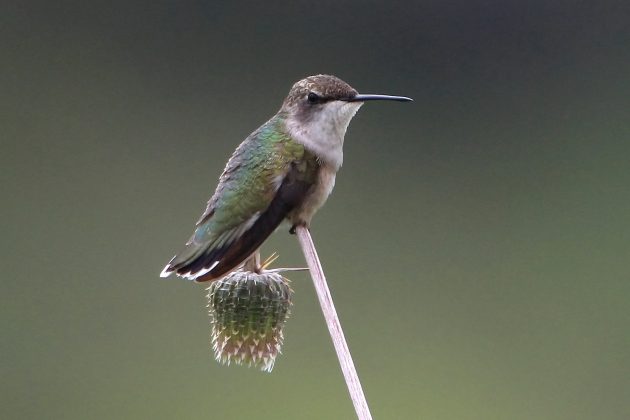
Ruby-throated Hummingbird, female
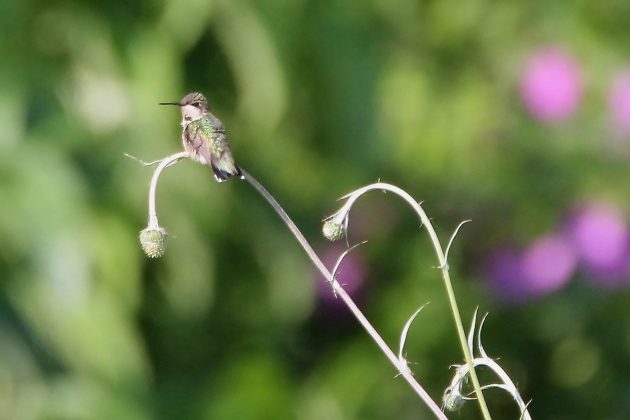
Immature male Ruby-throated Hummingbird
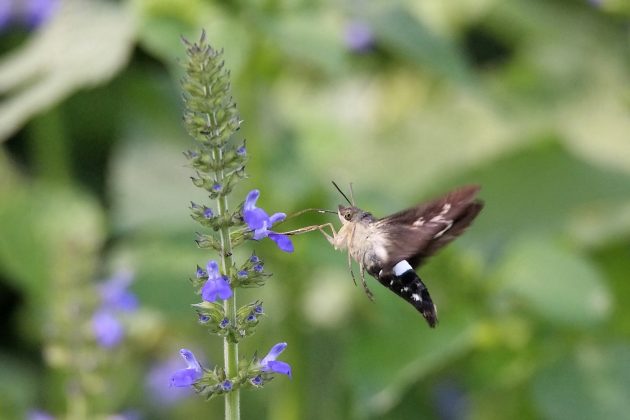
And a Hummingbird Moth, for good measure
It’s always exciting to see migratory species when they first arrive for the winter. But I am aware that I will continue to see most of these hummers throughout the winter. The Calliope Hummingbirds, however were much, much more numerous and active than I expect to see again this winter. They seemed to be everywhere, enjoying the amazing quantity of flowers in the marshy area. Most exciting, was that I finally got to get good views of male Calliopes. The Calliope Hummingbird is the smallest of all hummers in the U.S. and Canada (which eBird calls “North Americal”, although all good geographers know that Mexico is also part of North America.) But that tiny size doesn’t help much with identifying the females, forcing one to pay exquisite attention to wing length, as the Calliope is our only hummer whose wings extend past its tail when perched. Males, however, are unmistakeable, and very striking:
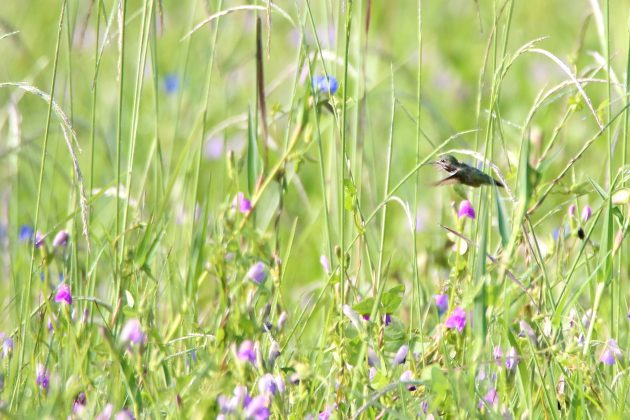
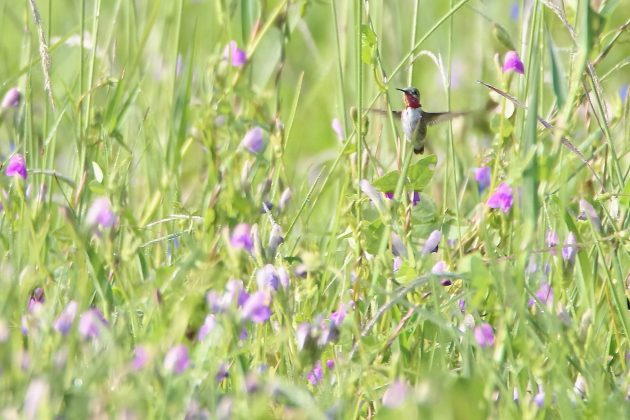
male
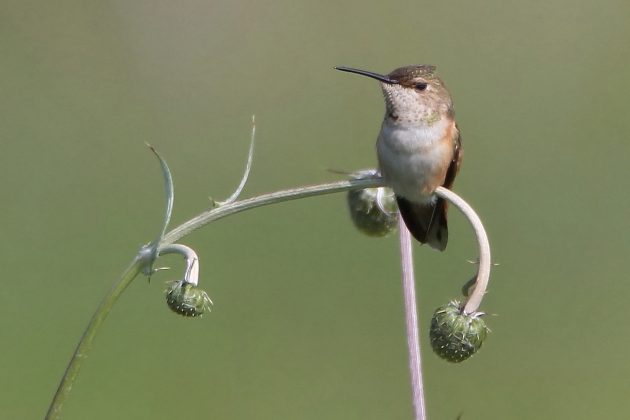
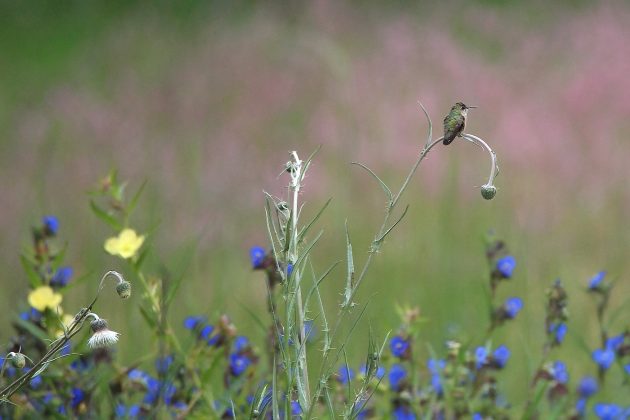
female
At this point, I need to move beyond our time at my friend’s property. Those are seven fantastic hectares. But they are still only seven, and after four hours, we decided to move to a nearby reservoir to see how its post-drought recovery is progressing. And what did we find there? Another male Calliope Hummingbird! But this one had to feed on a much smaller thistle patch, which forced it to accept photo sessions at a much shorter distance. Since I had NEVER before managed photos of a male Calliope, I am over the moon about these shots!
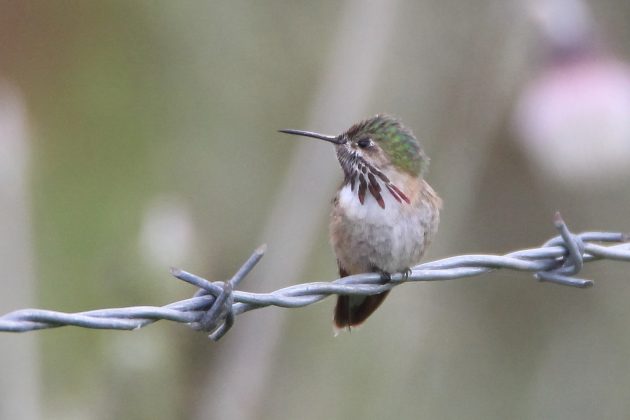
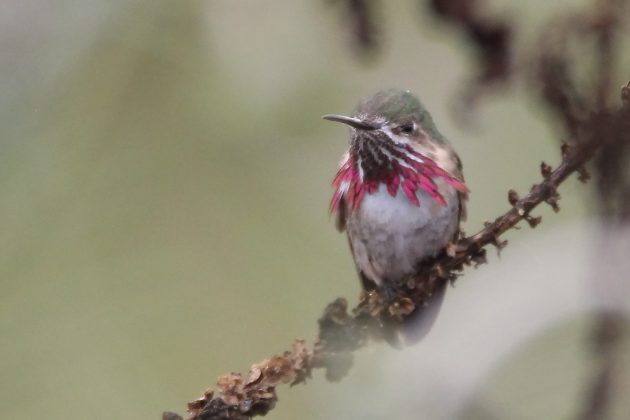
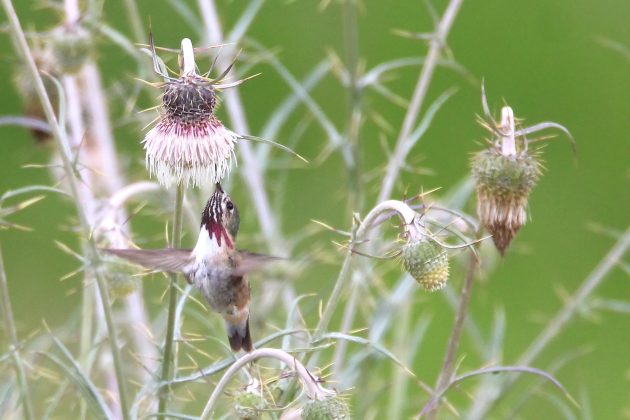
For the most part, these hummingbirds were the day’s revelation. But the above-mentioned Green Heron turned looking so comical, that I don’t want to risk sharing at least one photo of it before I finish here.
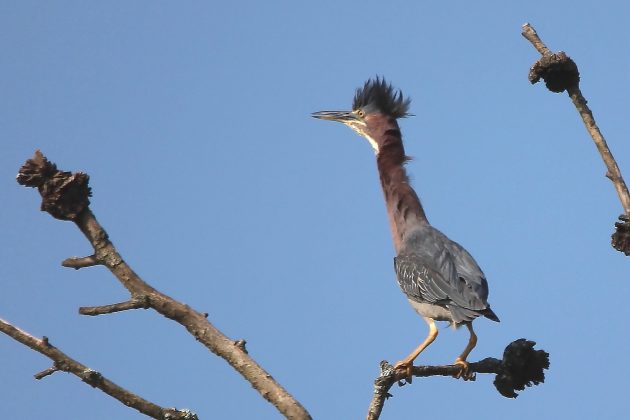













In Greek mythology, Calliope is the Muse who presides over eloquence and epic poetry; so called from the ecstatic harmony of her voice. Or so says Wikipedia. Did you hear the hummer sing, Paul? Regardless, that’s one very high on my wish list and such a stunning picture.
As an Old World birdwatcher, where there are no hummingbirds, I can only read with envy. We do have hummingbird hawkmoths, though.
I saw Calliope Hummers in Arizona. An owner of a B&B was kind and let birders on her property. It was a windy day, so the Calliope male had to work hard to approach and feed at a small nectar feeder. Lovely pictures.